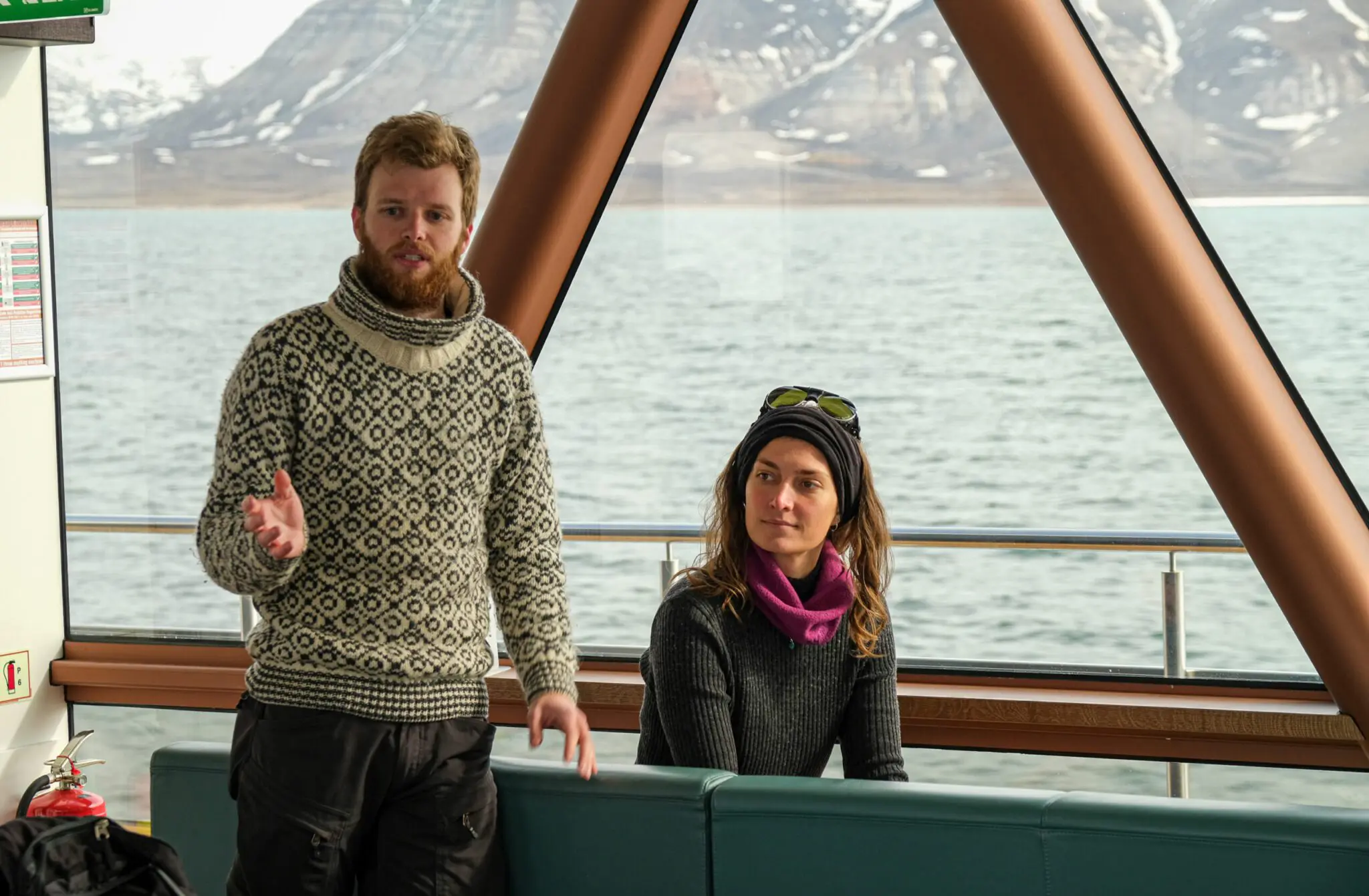Have you checked Yr.no?
It is one of the most common phrases in the Norwegian language, nevertheless, also a common source of frustration. Because who has not looked at a promising weather forecast, and made big plans for a visit to the beach, a summer party, or an outdoor gathering? Then only to wake up the next morning to overcast, rain in the air and cancelled plans?
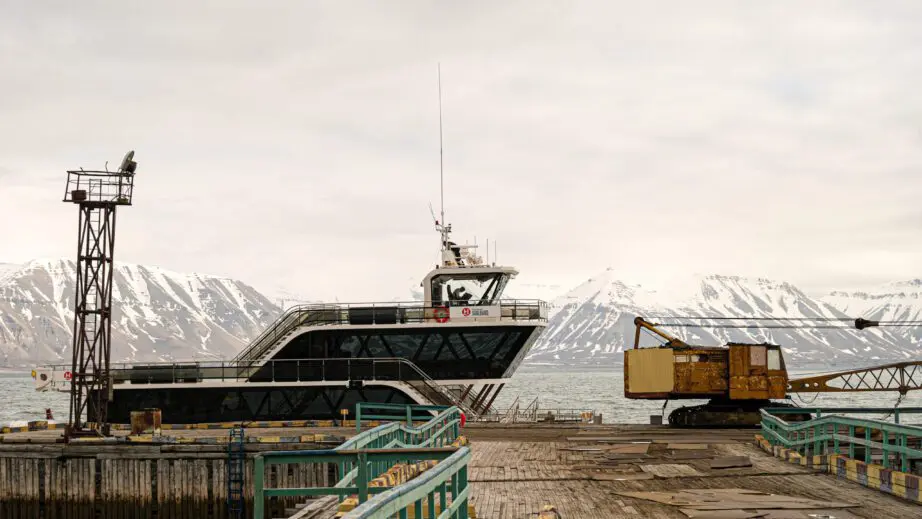
MS Bard at dock in Pyramiden. PhD-student Lukas Frank is checking the mobile weather station on top of the boat. Photo: Maria Philippa Rossi/UNIS
Text: Maria Philippa Rossi
It is only a few years ago since the weather forecast was the most accurate if you said, “The weather tomorrow is going to be like today.”
“Well, a bit more than a few years ago,” Lukas Frank interrupts.
He is doing his PhD in air-sea-ice interactions and is one of the people behind the Isfjorden weather information network (Iwin).
“Today’s level of forecast in Europe has improved this millennium. Now, the 7-day forecast is as skilful as the 3-day forecast was 20 years ago,” he continues.
“Nevertheless, for several places around the world, including the Arctic, weather forecasting remains challenging due to several reasons.”
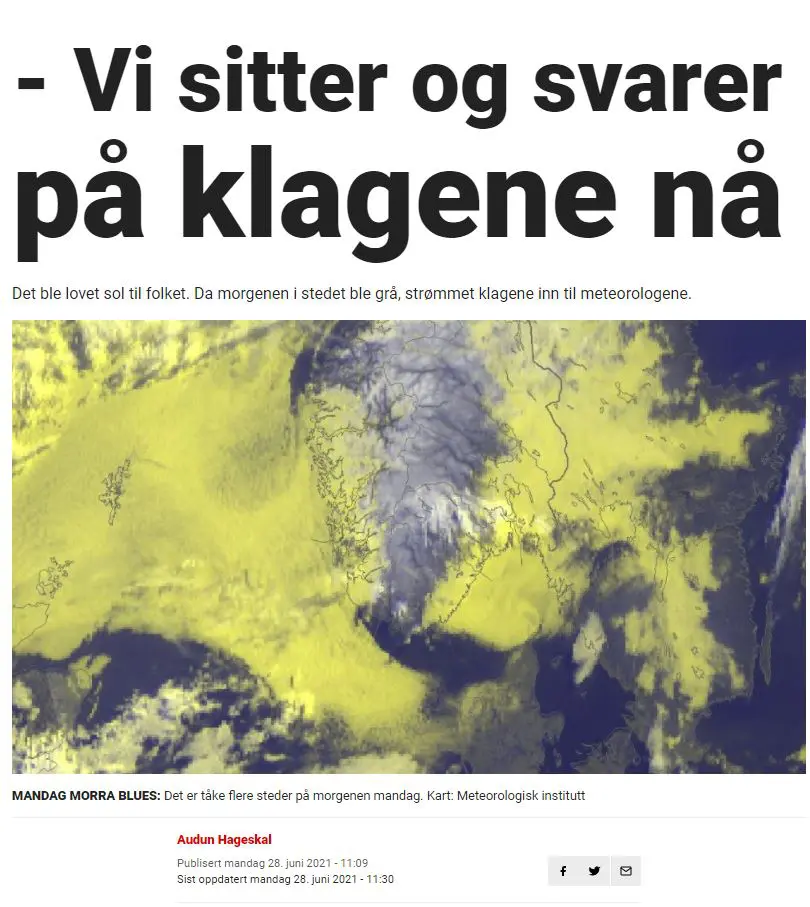
It is all about the grid
Frank says his friends jokingly blame him for the incorrect forecasts. He hopes that through a better understanding of how forecasts work people will see how difficult it is to predict. He explains:
“The overall challenge with a weather prediction model is that scientists need to simplify nature in order to represent it with a numerical computer model. A weather prediction model generates a grid, spanning over the Earth’s surface and many height levels in the atmosphere above. On Svalbard, the horizontal distance between each grid point is 2,5 kilometres. If you look at the mountains, fjords, and valleys on Svalbard you can see that there are a lot of parameters within that 2,5-kilometre grid that can affect the weather.”
He says that meteorologists are pushing towards a finer resolution, and things have improved with advancements in computer technology. Nevertheless, you will always reach a limit of what is possible to resolve with the model.
“On Svalbard there are glaciers, snow, mountains, sea ice, polar night, midnight sun, it is super complicated. We also have few observations to use for initialization and comparison. Around Isfjorden, there are stations at the airport, at Isfjord Radio, in Barentsburg and Pyramiden, but that is not enough.”
The human activity in the Isfjorden region is critically dependent upon accurate weather data for the safety of people and material values. At the same time, weather data are also crucial for a better understanding of the rapidly changing, local and regional climate system.

Live data from Isfjorden
The Iwin-project is initiated by UNIS Associate Professor Marius Jonassen, PhD Candidate Lukas Frank, and Master Student Florina Schalamon. It aims to improve people’s understanding of local atmospheric processes and weather forecasts for the region itself.
“Isfjorden is 20 kilometres wide, and often we have no idea how the conditions are in the middle of it. It is hard to predict the weather if we have no data from the area,” Frank says.
The network consists of several all-in-one weather stations deployed at lighthouse stations all around the fjord. Additionally, mobile stations are installed on board MS Bard and MS Polargirl.
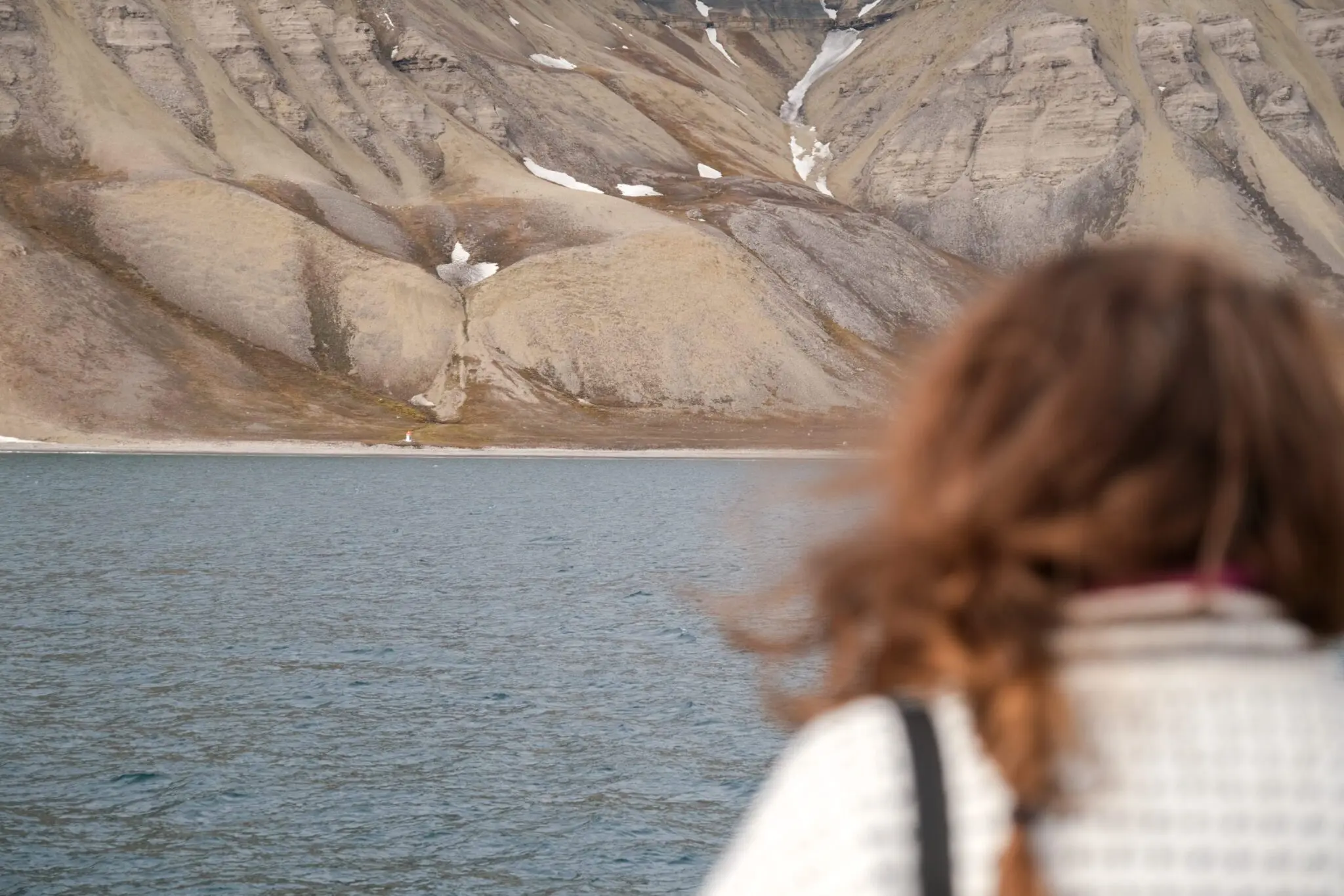
Both ships follow similar, semi-regular routes from Longyearbyen to Barentsburg and Pyramiden. By checking the online live update, people can get the current conditions of the whereabout of the boats. They can then compare it to the predicted forecast on Yr.no.
Small project, bigger picture
Frank’s PhD on air-sea-ice-interactions is looking at model data over the past 20 years. Having weather stations on MS Bard and MS Polargirl from April to October will help him estimate how well the model can resolve the Isfjorden area.
Florina Schalamon, originally from Southern Germany, has spent two periods in Longyearbyen in relation to her studies. She is currently writing her master thesis where she will compare data from Isfjorden with the forecast model.
“It was easy to get into the project. It is weather! Everyone has some relation to the field. As the boats finish their touring for the season in October I can focus on the data and the writing.”
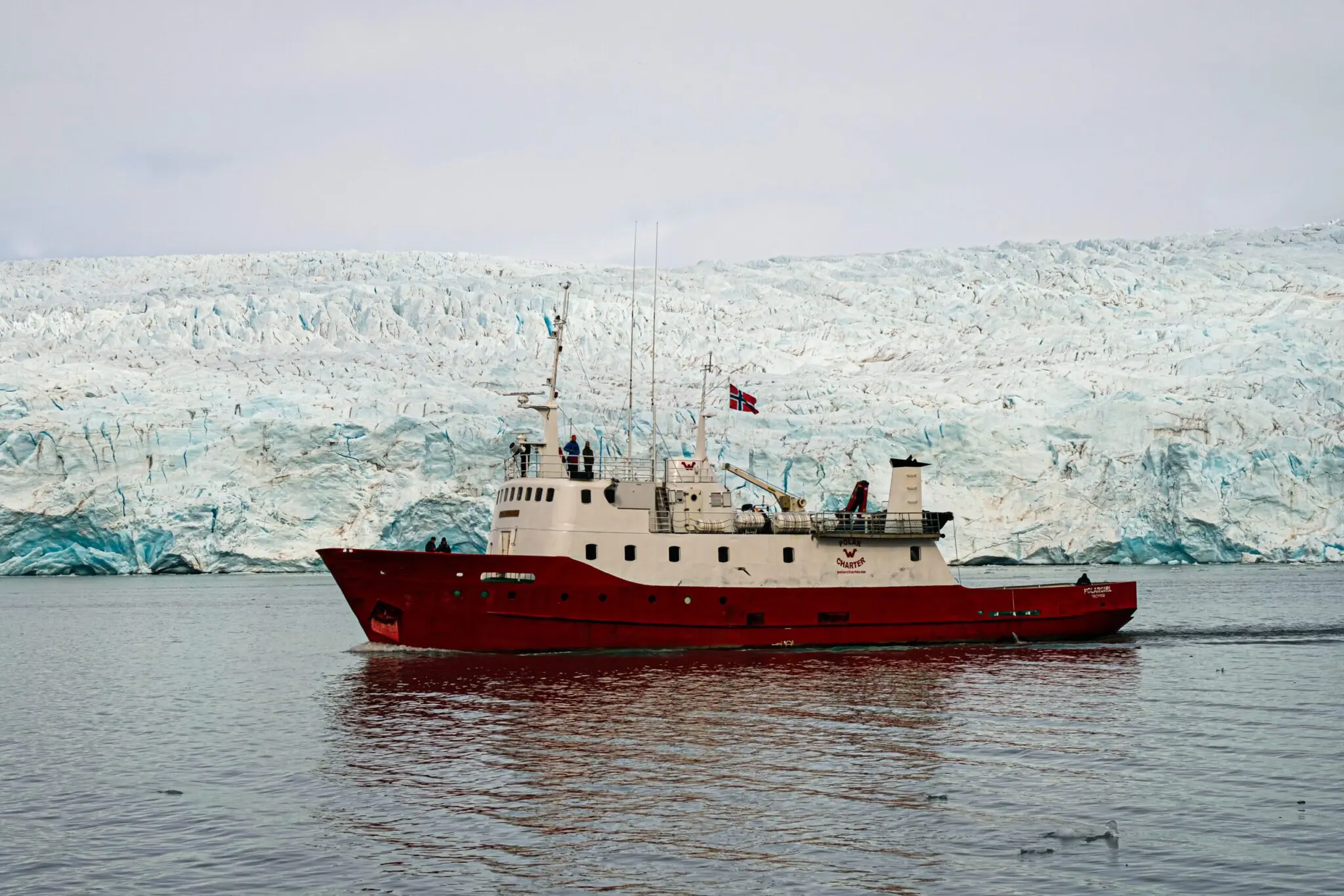
They both hope that the mobile weather stations can contribute to the local community and be used before people go out on recreational boat trips, whilst they use the data for more statistical analysis.
“The collected data do not only enhance our scientific understanding of the microclimate and air-ice-sea interaction processes in the fjord area and contribute to improving numerical weather forecasting in the region. It can also provide valuable information for planning and conduction of field activities in a safer manner,” Schalamon says.
“Therefore, special focus lies on the real-time data transfer from the stations and making the information directly available for everybody,” she adds.
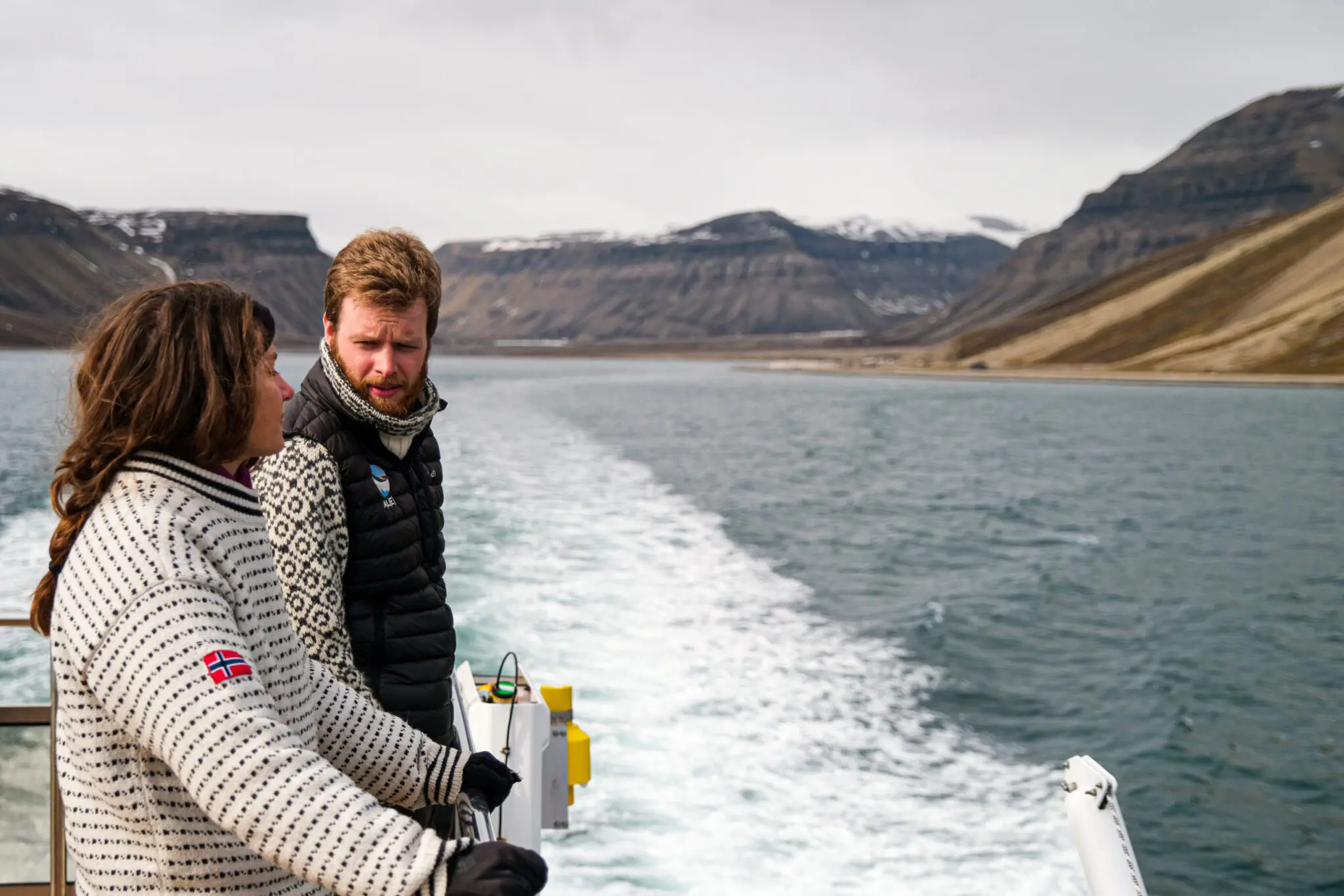
Can confirm poor forecasts
Despite being in the preliminary stages of the project, the research team experiences that Yr’s prediction sometimes are off.
“At Skansebukta, it can get 1-2 degrees warmer compared to the middle of the fjord during this time of the year, as the land is heating up more than the ocean. The model at Skansebukta is 2,5 kilometres, it cannot notice these small-scale variations. Furthermore, we’ve seen that it was warmer directly in front of the Nordenskiöld glacier, although you would expect otherwise,” Frank explains.
“We also see a tendency for the wind direction to follow the orientation of smaller side fjords of Isfjorden, when compared to the prevailing wind direction over the bulk of Isfjorden. These are examples of features of the local microclimate in Isfjorden that will be documented and investigated within the project,” he says.
Schalamon emphasizes that the weather stations cannot predict anything, but they can tell you what the current conditions are at that moment. Furthermore, it does not show cloud coverage or precipitation, just the wind, humidity, pressure, and temperature.

“But if you see MS Bard cruising Isfjorden in high winds, don’t go there with your kayak,” she says.
Frank says that he always has the rapidly changing weather conditions in mind when planning trips.
“On Svalbard we are limited in terms of infrastructure and equipment. Account for the worst-case scenario weather wise. It is better to be positively surprised than negatively surprised.”
“I have never heard of anyone complaining about bringing an extra down jacket.”
Read more about Isfjorden weather information network, or check the live updates from MS Bard or MS Polargirl.
